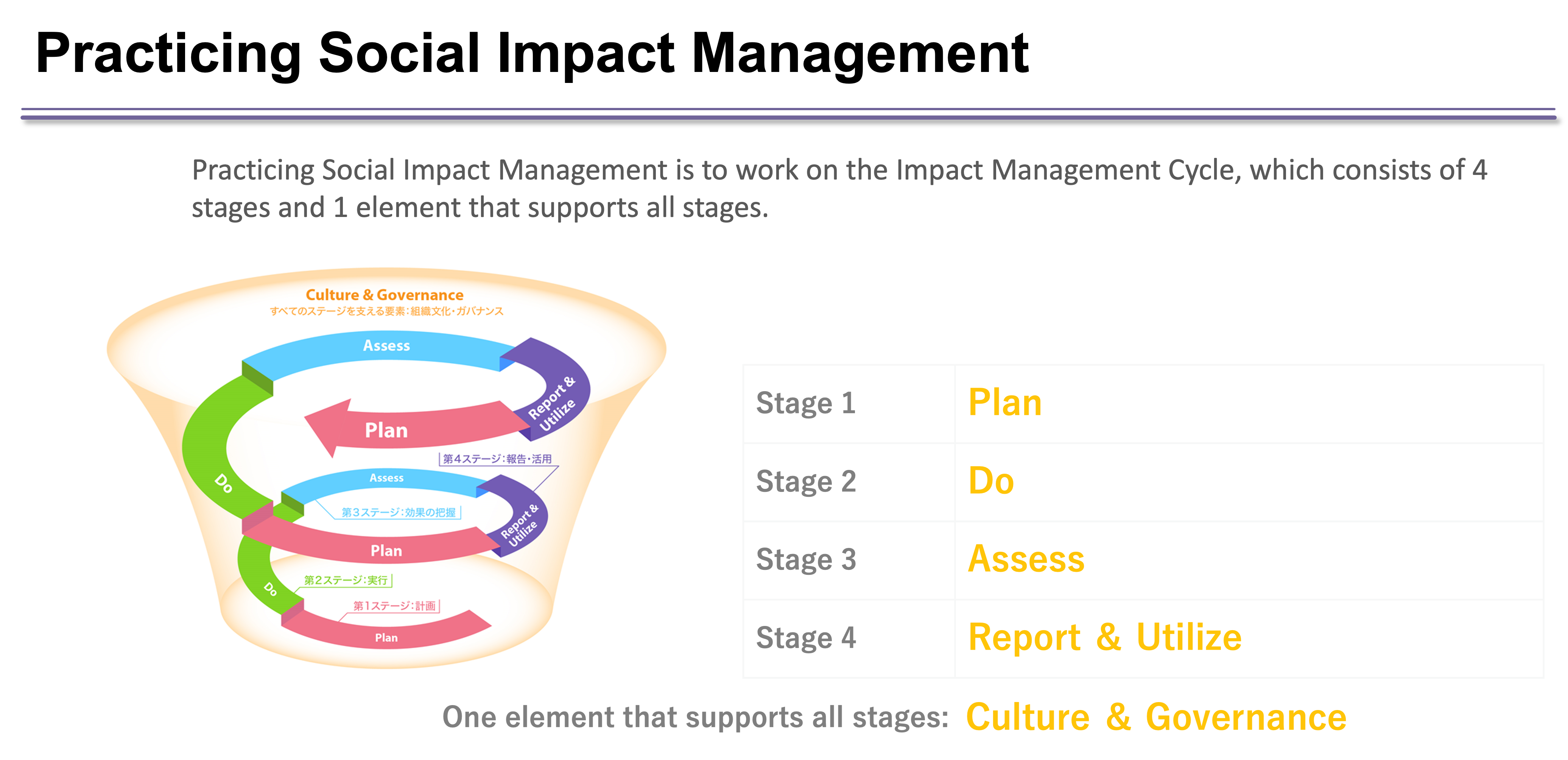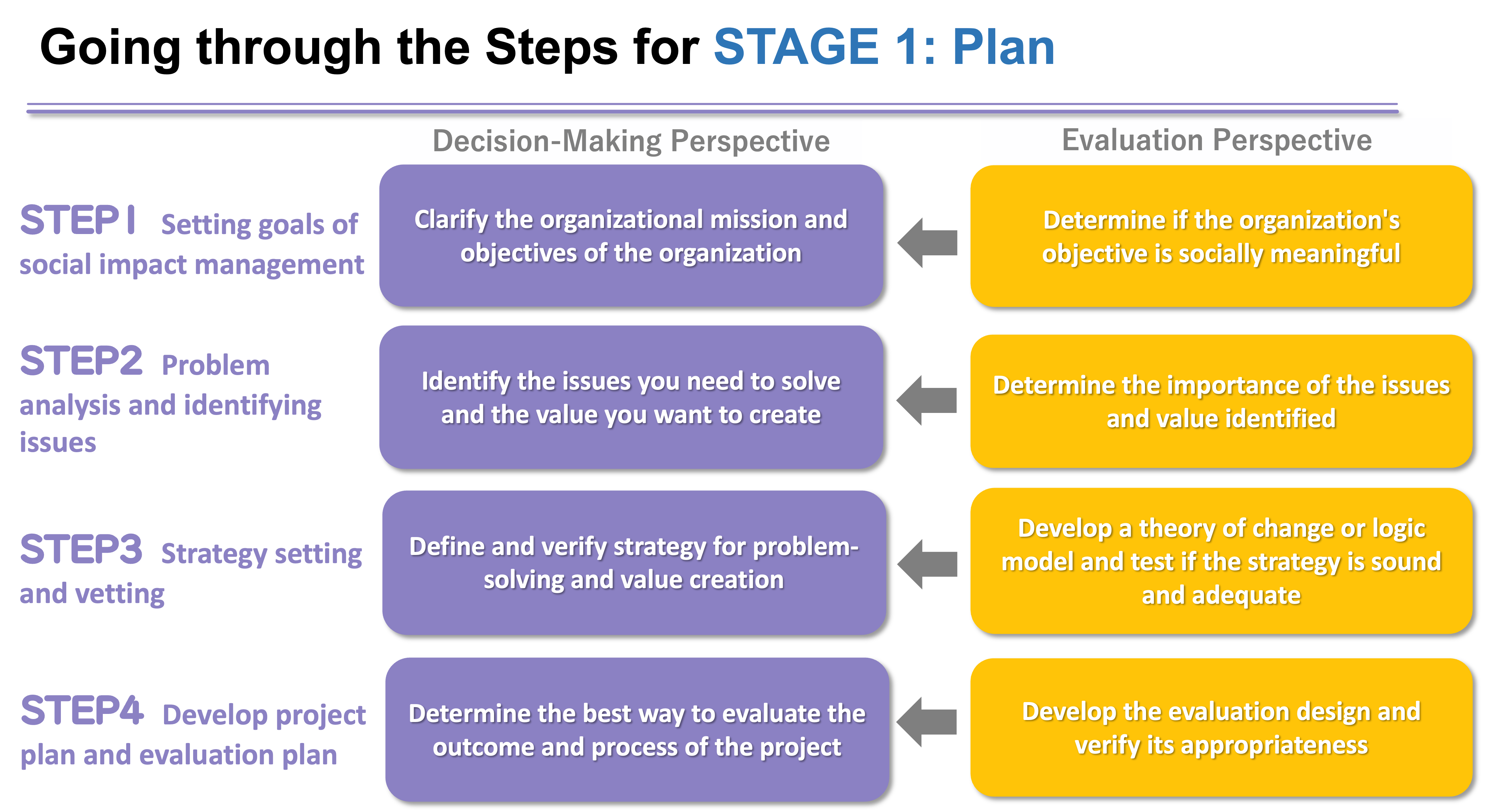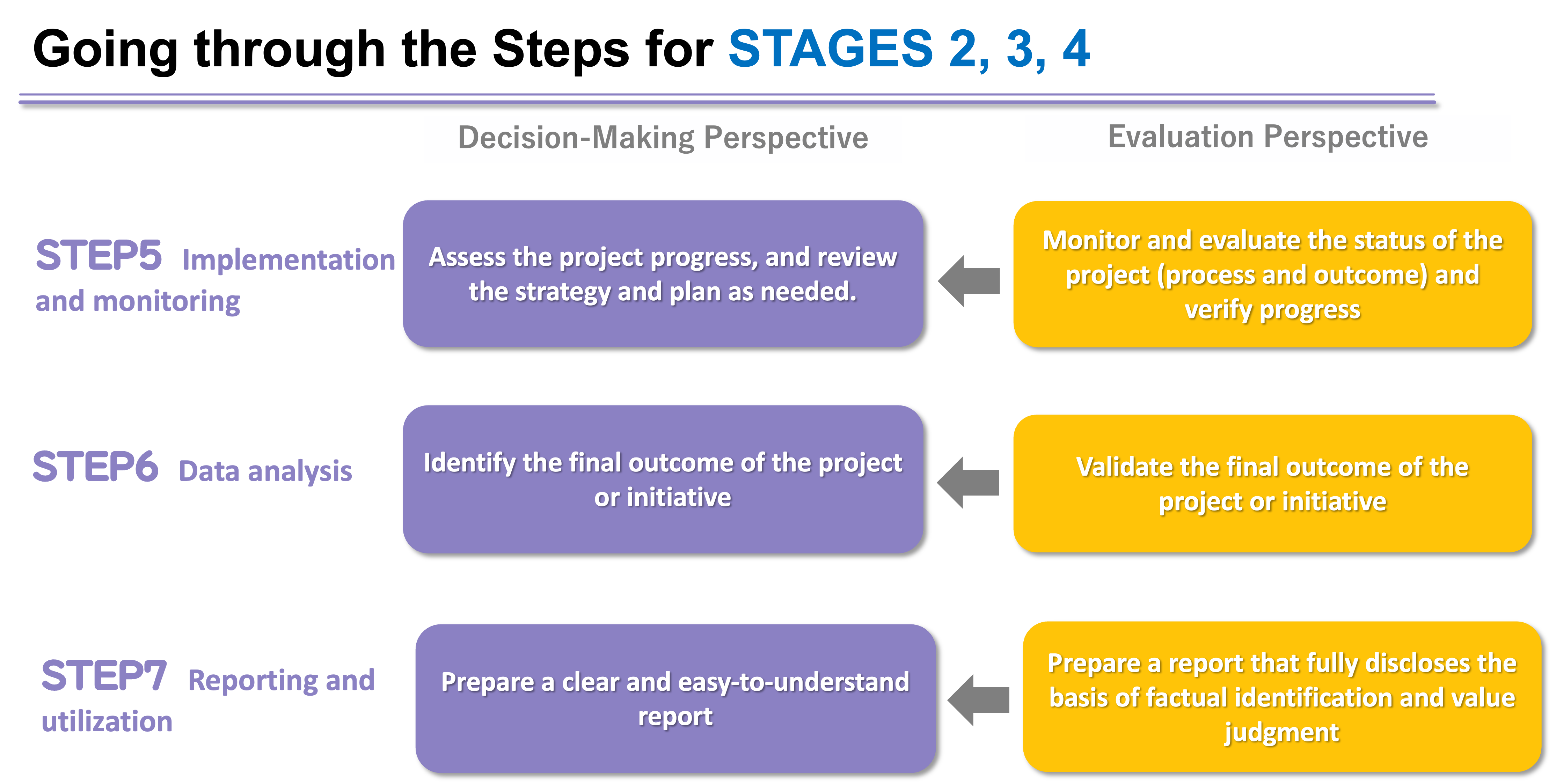PRINCIPLES FOR SOCIAL IMPACT INTENTION
The “Principles for Social Impact Intention “, developed by SIMI in 2018, which outlines actions to be taken to improve social impact.
The SIMI considers the social impact intention is a way of thinking that emphasizes the improvement of social impact generation through various initiatives that contribute to the resolution of social issues and the creation of social value. The SIMI has established the following principles that amplify the social impact intention.
Regardless of our differences in positions and roles in society, we collectively aim to create a better society by engaging in projects and activities with the following social impact intention.
SOCIAL IMPACT MANAGEMENT FRAMEWORK
The “Social Impact Management Framework” which provides a framework for business operations based on the principles of social impact intention.
This Framework outlines business management methods that increase social impact by adhering to the principles for social impact intention.
(Japanese only)
THE PRACTICAL GUIDE AND TOOLS
The Practical Guide illustrates the steps that businesses can take to advance social impact management. It provides guidance for the construction of logic models, the identification of outcomes to be measured, and the selection of measurement methods. In the Practical Guide, the 7 steps are described for working through the impact management cycle which consists of 4 stages and 1 element (Culture & Governance) that supports all stages.



(Highlights and Key Points)
LOGIC MODELS
In the social impact management, it is recommended that the companies or nonprofits running the project and stakeholders, who are supporting or are benefiting from it, work together as much as possible by:
- Sharing the understanding of the causal reasoning represented by the logic model through learning and discussion;
- Implementing the project based on intended outcomes, and;
- Evaluating the project success or failure by using the agreed upon indicators.
The following logic models by sector are available:
| Education | Employment support | Community development | Environmental education |
| Culture and art | Welfare (elderly care) | Parenting support | Disaster prevention |
| Homeless support | Sports | Healthcare | Healthcare |
(Japanese only)
OUTCOME INDICATOR DATABASE
In the Outcome Indicator Database, some commonly used indicators to measure outcomes are presented along with how to measure those indicators.
(Japanese only)for the Outcome Indicator Database.